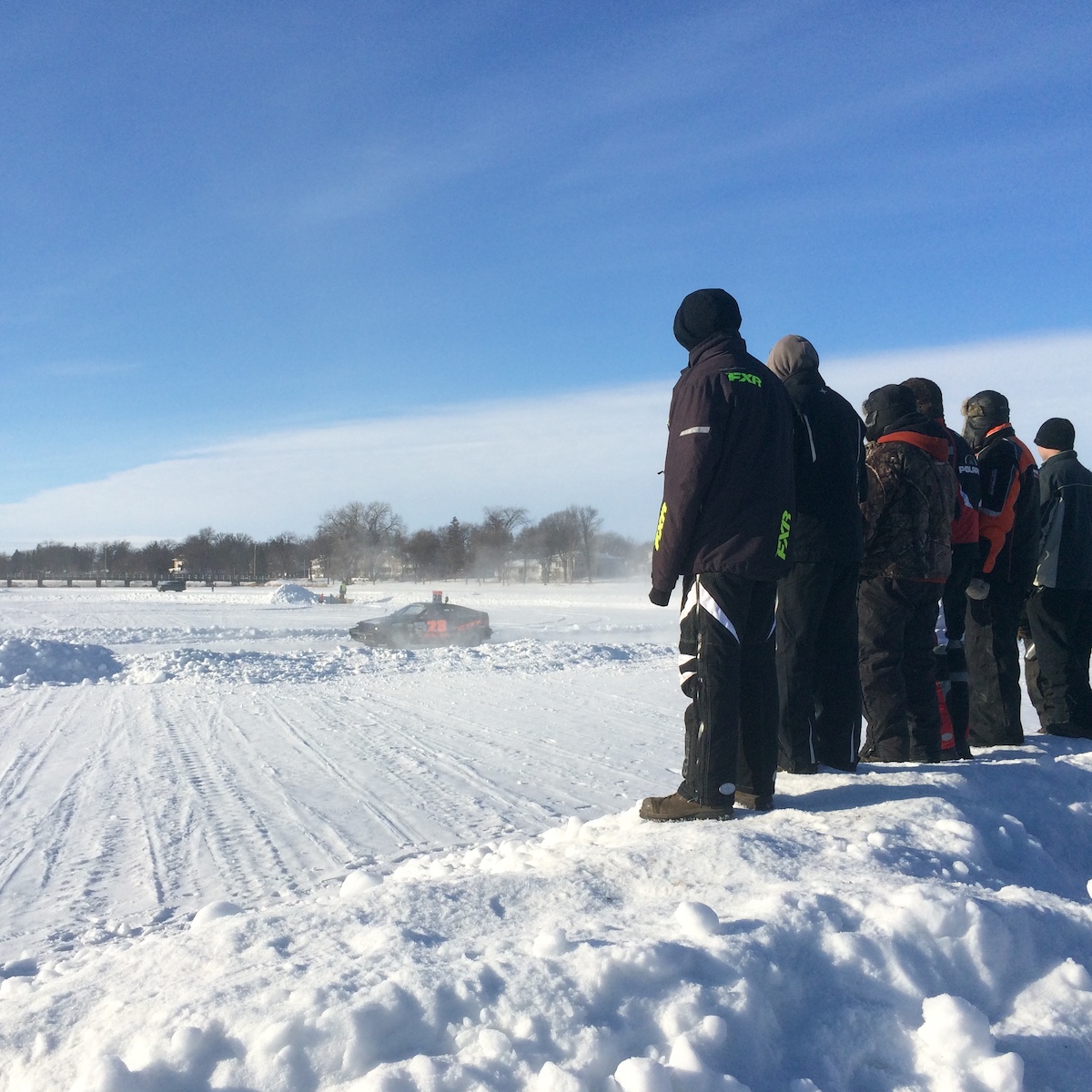Problem: The community you are working in as an economic developer has a major tourism attraction at its core, but it is frozen solid from December until March. The typical above zero regional tourism opportunities drop along with the temperatures.
Restaurants, hotels, and your downtown niche retailers would like some great weekender traffic, even if the water in the lake is frozen into an ice sheet 40 cms thick.
Portage La Prairie, MB had a problem; a lack of experience tourism in winter months. One that the community could market to external markets that are broader in scope than sports tourism.
Solution:
Roll with it…literally, and bring 27 auto racers to town to race around the lake on kidney shaped ice track for two days on a cold weekend in February (yes, racing cars on ice)!
After the event, my economic development crew at the time interviewed each one of the racers and their families regarding how much they had spent in the private sector over the weekend (Ie. Hotels, restaurants, retail and gas stations!). On average each racer spent $743 over the weekend in local establishments (so about $20,000 after all). And that was just the racers…..
We had over 900 spectators per day; some local of course but over 50% of the license plates attending were from outside the political boundaries (based on simple walk by Ec. Dev. surveys).
I have quite a few anecdotal stories of the positivity for such an event from this -24C day. My usual, Economic Developer Local Ambassador habit of walking through crowds is instinct now. This is really just talking to complete strangers about the event, the town or some localized knowledge (a great restaurant for families, or where the local hardware store is). I find doing something like this always adds value to each participant in the conversation. On this day, it was no different. After an hour in the crowd, I noted a pattern; in these conversations, people who had relations in Portage la Prairie had heard of the event and had come for a visit that weekend to see family and join in on said event.
So? Success.
Quantitatively, it brought an economic boost, during the slowest retail season of the year (approx. $20,000 from the racers themselves + 1800 spectators spending).
Qualitatively, it brought “weekenders” back to the region (ages 5 to 85) to visit, and of course, speak about it later when they were back in their communities. This equates to regional experience word of mouth advertising.
So it was a way to utilize a what was a perceived negative, turning it into a multiplied positive for the economy.
And it was also a good time.
